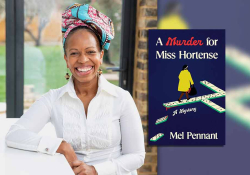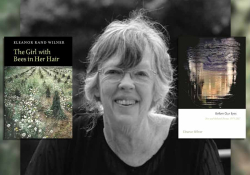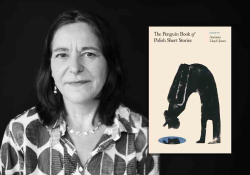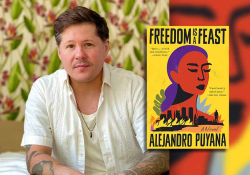The Festival Five with NSK Juror Tanaya Winder
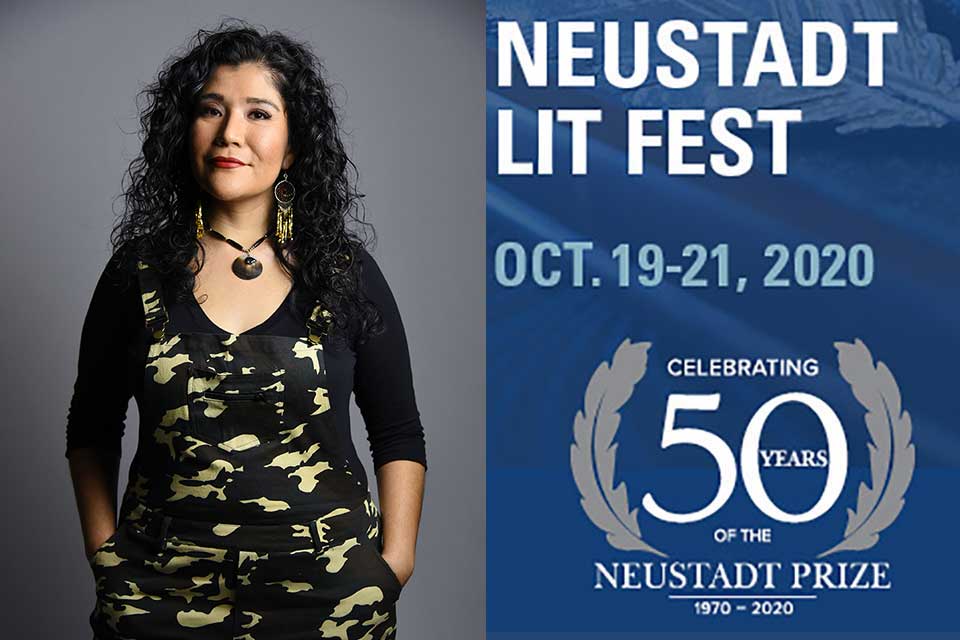
Poet, writer, and educator Tanaya Winder is an enrolled member of the Duckwater Shoshone Tribe and has ancestors from the Southern Ute, Pyramid Lake Paiute, Navajo, and Black tribes. She grew up on the Southern Ute reservation in Ignacio, Colorado, and earned her BA at Stanford and an MFA from the University of New Mexico. Winder’s collections of poetry include Words Like Love (2015) and Why Storms Are Named After People and Bullets Remain Nameless (2017). Poetic Theater Productions performed a suite of Winder’s poems as Love in a Time of Blood Quantum, and she won an Orlando Prize in poetry from the A Room of Her Own Foundation. Winder cofounded As/Us, an online journal devoted to writers of color; cofounded the traveling exhibit Sing Our Rivers Red to raise awareness of missing and murdered Indigenous women; and founded Dream Warriors Management, a company that manages Indigenous artists. The National Center for American Indian Enterprise Development named her one of “40 Under 40” emerging American Indian leaders, and she was a 2017 First Peoples Fund Artists in Business Leadership fellow. Winder lectures and teaches widely and is the director of the Upward Bound Program at the University of Colorado.
In addition to serving as a juror for the 2021 NSK Neustadt Prize for Children’s Literature, Winder will participate in the Readings and Book Giveaways by the 2021 NSK Prize Jury event.
Q: What was your first favorite book, the book that made you a reader?
A: I enjoyed reading when I was younger, but honestly the first book that really impacted me was Whirligig by Paul Fleischman. When I was younger, I struggled with anxiety and depression all the while not realizing that those were symptoms I was dealing with. I remember a counselor told me about the book. So, one summer during my sophomore year of college, I was working as an intern at the US State Department. During one of my weekends in DC, I ventured to Barnes & Noble. In the YA section, I finally found the book. I took it to the coffee shop and read it within an hour or so. The book changed me. It helped me on the healing journey I was just beginning, and I think that was the moment a seed was planted—books and words could help heal you. (Editorial note: Fleischman was a nominee for the very first NSK Prize in 2003.)
Q: What is the best book-receiving experience you’ve had?
A: For my thirtieth birthday, my sister and my best friend surprised me by gifting me a signed copy of Gabriel García Márquez’s Love in the Time of Cholera. When I was a freshman at Stanford, one of my classes had us read García Márquez’s work. It was my first time being exposed to his work and magic realism. I was drawn to his work; it helped ground me at a time when I felt lost. So, years later, post-MFA program, I’d been working on a collection with a tentative title, Love in the Time of Blood Quantum. I ended up having to change the title because another author was working on a project which also had that title. It was mixed emotions because my work in progress carried such emotional heaviness. I was writing about healing from loss of love, losing a friend to suicide, and reconciling ancestral and historical trauma. It felt very personal. But I ended up doing the right thing because she held the title first, and so I changed my title to Words Like Love. I’m really grateful for the experience of putting a book together start to finish. It was a really raw time for me in my healing. So, my sister and friend contacted my family to get donations—they all signed a card for me and helped get me the book. It sits now in my office on top of the bookcase. And I think of all that love whenever I write.
Q: From among your (likely) tall to-be-read stack, which book or two are you absolutely determined to read soon and why?
A: I have Natalie Diaz’s collection Postcolonial Love Poem in my purse right now. I’ve been carrying it with me, hoping to read it in between errands or other work (which has been piling on), but I cannot wait to read it! Her first collection, When My Brother Was an Aztec, hit me in the gut and heart in such a profound way. I can’t wait to see what she continually gifts the world through her words. (Editorial note: An interview with Diaz is forthcoming in the autumn issue of WLT.)
I’m also looking forward to reading a recently released Norton anthology that I helped with, When the Light of the World Was Subdued, Our Songs Came Through: A Norton Anthology of Native Nations Poetry. I helped with the Mountain/Plains region section, and I cannot wait to read the collection in its entirety. It’s such an important book for Native literature, and I cannot wait to see how it will be implemented in classrooms to inspire future generations!
Q: What is the book you most often gift children and why?
A: Recently, I’ve been gifting We Are Grateful: Otsaliheliga, by Traci Sorell. Gratitude is such an important value to have in our lives, and I wish for all of our young ones to know what it means to be thankful.
Q: You cofounded the traveling exhibit Sing Our Rivers Red to raise awareness of missing and murdered Indigenous women, and this exhibit has traveled all across the US and into Canada. What is in the exhibit?
A: The exhibit with started with Hannabah Blue, Nanibah Chacon, and so many others! Nanibah Chacon is a brilliant visual artist. We approached her, telling her we wanted to help raise awareness about the epidemic of murdered and missing Indigenous women and girls. I got the idea to collect single-sided earrings (if you’d lost a side to the pair and were holding onto the other side because you remember who made it, or if you made it . . . the special memory attached to the earring). The earrings were intended to represent the 1,181 reported missing and murdered Indigenous women and girls at the time. So we planned a whole week of events, an honoring for those who did the work before and were doing the work on the ground level/with community, a march in solidarity with the Women’s Memorial March that takes place every Valentine’s Day in Canada, and other programming. The exhibit contains notes from those who submitted earrings; a lot of these notes state who the earring is for or in memory of, earrings, and a map showing where all of the earrings came from. Finally, it includes a reflection book for those who have visited and spent time with the exhibit. It is very powerful, heartbreaking, and moving.




